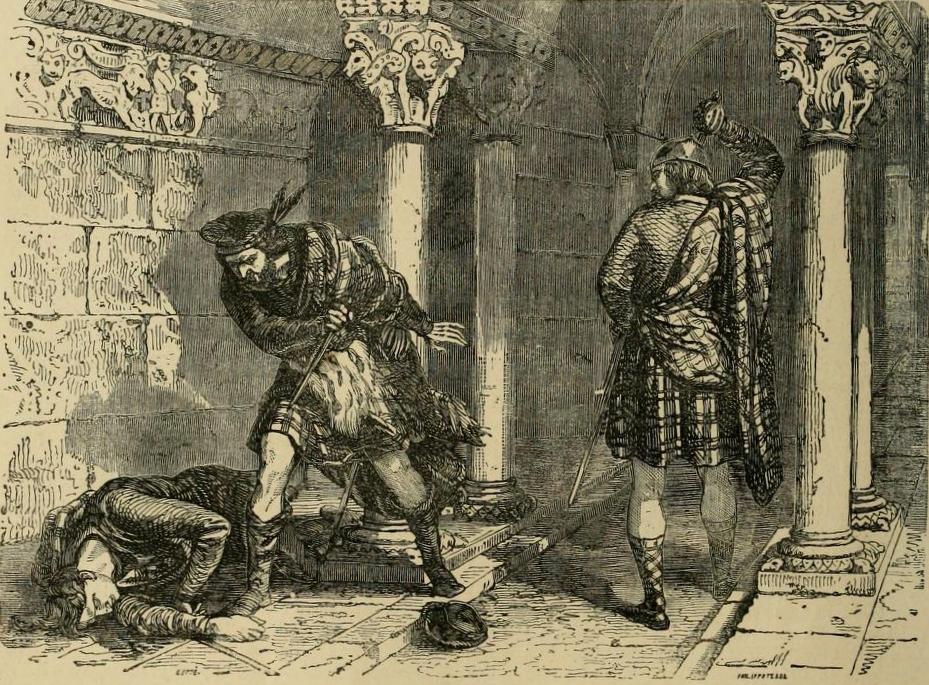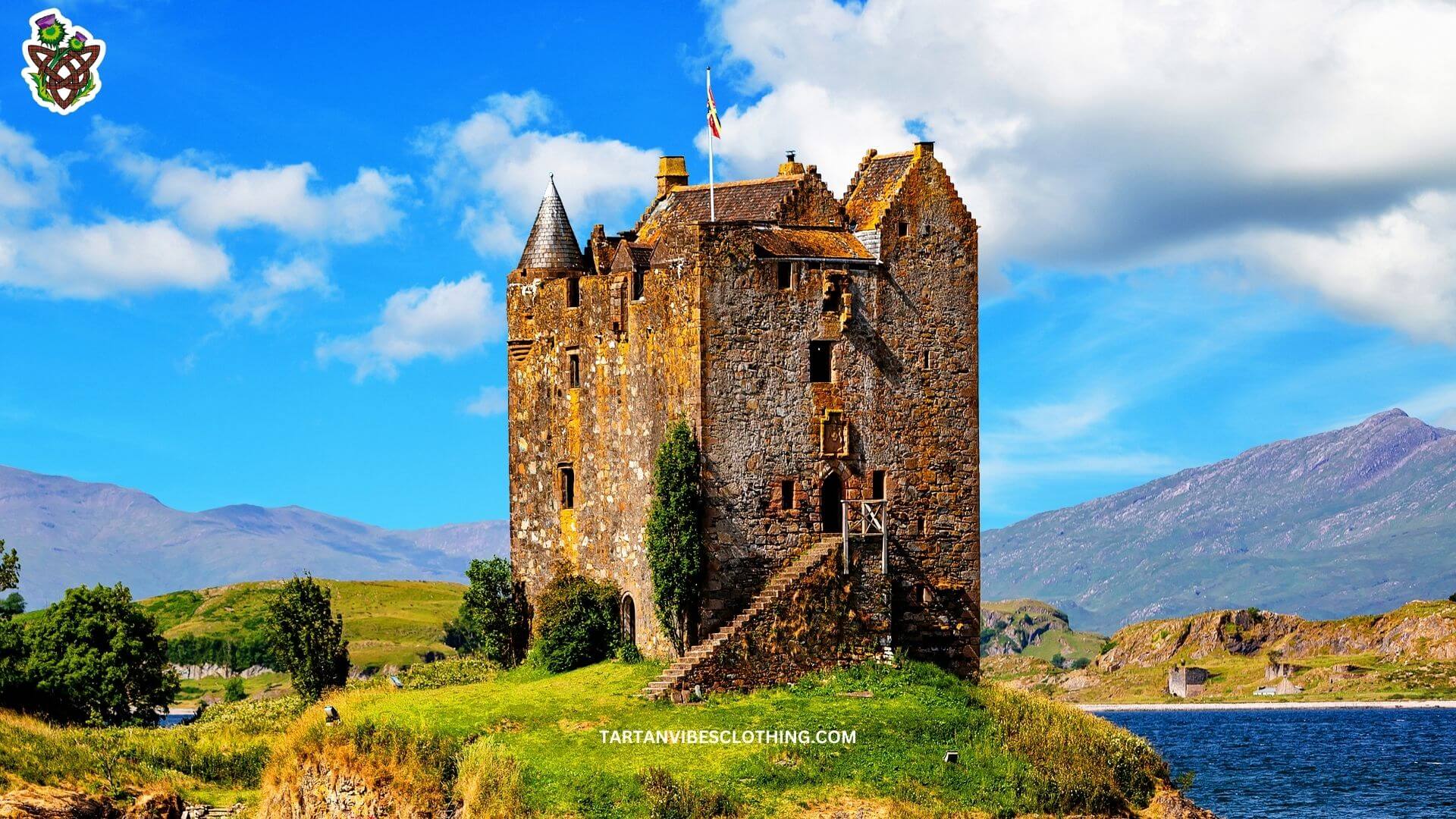Explore Clan MacDougall History: Legends and Ancestral Tales
by Aimee Li on Jul 25, 2024
Table of Content
I. Introduction
Clan MacDougall's History is a captivating journey through centuries of courage, tradition, and cultural heritage. As one of Scotland's oldest clans, Clan MacDougall's history is filled with tales of bravery, strategic alliances, and enduring legacies. From their origins in the rugged landscapes of Argyll to their influential role in Scotland's medieval conflicts, the Clan MacDougall's history offers a rich tapestry of events and personalities that have shaped their legacy.
Dive into the fascinating Clan MacDougall History and uncover the stories of a clan that has left an indelible mark on Scottish heritage.
1. An Overview of Clan MacDougall
The saga of Clan MacDougall is a vibrant blend of courage, lineage, and customs. Emerging from the rugged terrains of Argyll, Scotland, Clan MacDougall has been integral to the country's history since the 12th century. The chiefs of the MacDougall clan trace their lineage back to Somerled of the 12th century, sharing ancestral ties with the chiefs of Clan Donald, which ultimately connects them to the Viking-descended Norse-Gael dynasty of House of Ivar.

During the 13th century, the Clan MacDougall, whose chieftains were the inaugural Lords of Argyll and subsequently the Lords of Lorne, was the most powerful clan in the Western Highlands. During the Wars of Scottish Independence, the MacDougalls allied with Clan Comyn, whose leaders contended with Robert the Bruce for the Scottish throne, leading to conflicts between the MacDougalls and Bruce.

This alliance contributed to the decline of the MacDougalls' influence. It facilitated the ascendancy of their kin, Clan Donald, who had backed Bruce, along with the rise of Clan Campbell, who became traditional adversaries of both the MacDougalls and Clan Donald. Their stronghold, Dunollie Castle, is a historical reminder of their significance. Over the years, Clan MacDougall has maintained its cultural traditions, with numerous descendants still proudly bearing the clan name today.
2. Clan MacDougall History: The Origin of Clan MacDougall
The name Clan MacDougall is derived from Dougall, the offspring of Somerled. Following Somerled's demise at the Battle of Renfrew in 1164, Dougall took control of most of Argyll and several islands, including Mull, Lismore, Jura, Tiree, Coll, and more.
The Celtic given name Dougall, also known as Dugald, originates from the Gaelic term dubh-gall, which translates to "black stranger". The Norwegian king recognized Dougall's royal lineage, and he was referred to as 'King of the South Isles and Lord of Lorne'. One of Dougall's sons appears to have been Óspakr-Hákon, who was appointed King of the Isles by Hákon Hákonarson, the King of Norway, in 1230.

Another son of Dougall was Duncan, who fathered Ewan. Duncan and Ewan constructed numerous castles to protect their land, including Dunstaffnage Castle, Dunollie Castle, and Duntrune Castle on the mainland. They erected Aros Castle, Cairnburgh Castle, Dunchonnel Castle, and Coeffin Castle on the islands. Dunollie Castle is believed to have been fortified since the 6th century and served as the chief seat of Clan MacDougall. Additionally, Duncan established Ardchattan Priory, where the MacDougall chiefs were interred until 1737.
II. Clan MacDougall History
1. Scottish-Norwegian War
Ewan's lands in the islands were under the authority of the Norwegian king, while his lands on the mainland were under the authority of the Scottish king. This dual allegiance made it difficult for him to be faithful to both rulers. In 1263, Haakon IV of Norway arrived with a large fleet near Oban to launch an invasion of Scotland's west coast. Nevertheless, Ewan chose not to participate in the invasion, and due to their shared ancestry, Haakon allowed him to remain undisturbed.
Following this, the Battle of Largs occurred, where Ewan allied with the Scots and attacked part of the Norse fleet. The Vikings suffered a complete defeat, and three years later, Norway relinquished all claims to the Hebrides, transferring them to Scotland.
2. Wars of Scottish Independence
The MacDougalls' power in Argyll put them at odds with the Clan Campbell. In 1294, John MacDougall of Argyll commanded the Clan MacDougall in a confrontation against the Clan Campbell during the Battle of Red Ford, resulting in the death of Sir Colin Campbell, though both factions suffered significant casualties.

The fourth leader of Clan MacDougall wed a sister of John Comyn II, who hails from Badenoch and is well-known as the "Black Comyn". His offspring, John Comyn III, often called the "Red Comyn", was murdered by Robert the Bruce at Greyfriars church in Dumfries in 1306, resulting in a feud between the MacDougalls and the Bruces. The MacDougalls, who had previously supported William Wallace in the fight for Scottish independence, were embroiled in a blood feud with the Clan Bruce, which also championed Scottish independence.

Shortly after Robert the Bruce was crowned at Scone, he had to retreat into Argyll due to pressure from the English, seeking refuge with his allies, the Campbells. Nevertheless, the Clan MacDougall unexpectedly confronted Bruce and defeated him in what became known as the Battle of Dalrigh. Although the king managed to escape, he left behind a stunning piece of Celtic jewelry, the Brooch of Lorne, which became one of the prized possessions of Clan MacDougall.
Three years later, Robert the Bruce returned to Argyll with three thousand seasoned soldiers to confront the MacDougalls. John MacDougall from Lorne tried to ensnare his opponents by devising a trap for them. However, in the ensuing conflict known as the Battle of the Pass of Brander, the forces led by the MacDougalls faced defeat and were compelled to withdraw from the battlefield. Consequently, the king confiscated the lands of the MacDougalls and granted them to the Campbells for their loyalty.

While the MacDougalls never fully restored their power, their fortunes experienced a degree of revival under John MacDougall's grandson, John Gallda MacDougall, who became the Lord of Lorne. In the middle of the 14th century, he moved from England to Scotland, married a niece of the reigning King David II, and regained the clan's ancestral lands in Lorne. A significant portion of their mainland territory was returned through a royal charter by David II of Scotland. Although Lorne's lordship eventually transferred to the Stewarts after John Gallda's passing, the central lineage of the MacDougalls continued through his son Allan.
3. In the 15th century
In 1468, a significant conflict took place between the MacDougall clan and the Stewart clan of Appin during the Battle of Stalc. This battle was notable for the fierce rivalry between these two clans, which were both prominent in the region at the time.

The Clan MacDougall, renowned for their strength and courage, engaged in this confrontation against the Clan Stewart, who were equally formidable and had established themselves in the Appin area. The clash at Stalc reflects the more immense power struggles that characterized Scottish clan dynamics during the late 15th century, with territorial disputes often leading to violent confrontations.
4. In the 17th century and Civil War
In the 17th-century Civil War, the MacDougalls mainly sided with the royalists, and their chief, Alexander MacDougall, took five hundred of his men into combat. Nevertheless, once royalist James Graham, 1st Marquess of Montrose, was defeated, a Covenanter army commanded by David Leslie, Lord Newark, was dispatched to Argyll to confront royalist sympathizers. After the monarchy was restored in 1660, the lands of the MacDougalls were returned to them.

5. In the 18th century and Jacobite risings
During the Jacobite uprising of 1715, the MacDougall Clan backed the Jacobite movement and participated in the Battle of Sheriffmuir. Following this battle, their leader was compelled to flee into exile but eventually returned to Scotland to live as an outlaw. He received a pardon in 1727.
His son and successor, Alexander MacDougall, did not engage in the Jacobite uprising in 1745. Nevertheless, his brother and some clan members did fight for the Jacobites at the Battle of Culloden in 1746. At that time, the clan's fighting force was reported to be 200 men.

III. The Branches of Clan MacDougall
The Clan MacDougall, much like a grand tree, spread its roots widely through its branches, each one playing a role in the clan's overall tale:
MacDougall of MacDougall and Dunollie: This main branch possesses the ancestral stronghold at Dunollie Castle, representing the lasting emblem of the clan's leadership and cultural heritage.
MacDougall of Gallanach: Located near Oban, this branch's history is intricately tied to the rhythms of the sea, showcasing the clan's extensive maritime legacy and its close ties to the coastal life of Argyll.
MacDougall of Lunga: Found in the rugged terrain of the Slate Islands, the Lunga lineage has a rich history rooted in the slate mining industry and marine activities, contributing yet another vibrant layer to the diverse narrative of the MacDougall clan.
Every branch contributes its distinct thread to the lively clan story, stretching from the breezy shores of Argyll to the historic castles and monasteries scattered throughout Scotland. The MacDougall clan is a powerful reminder of the significance of heritage and the lasting connections of family.
Set sail on an odyssey through the illustrious annals of Clan MacDougall with our handpicked collection of tartan creations. Embody the indomitable spirit that characterizes the MacDougall clan, weaving a piece of this noble history into the fabric of your daily existence:
IV. Conclusion
Frequently Asked Questions
Where did the MacDougall clan come from?
Following the death of Somerled, the leader of the Kingdom of the Isles, his son Dougall inherited most of his father's territories in Argyll and the islands. Subsequently, Dougall's son, Duncan, became the first to adopt the title MacDougall, and the clan traces its lineage back to him.
What is the motto of the MacDougall clan?
Buaidh no bàs
The MacDougall clan motto is "Buaidh no bàs," which translates to "Victory or Death". Their crest features an armored arm grasping a cross crosslet fitchée.
Who is the leader of the MacDougall clan?
Morag Morley MacDougall
The current chief of the clan is Morag Morley MacDougall of MacDougall and Dunollie.
Where is the MacDougall Castle?
Castle Location: Argyll, Scotland.
What does the MacDougall tartan look like?
The MacDougall Modern Heavyweight Tartan features a red foundation accented with hues of green, blue, and a white overcheck. This Celtic clan hails from Lorn, originating from Dugall, the firstborn son of Somerled of the Isles.








Says Howell is part of clan Macdougall wanting information